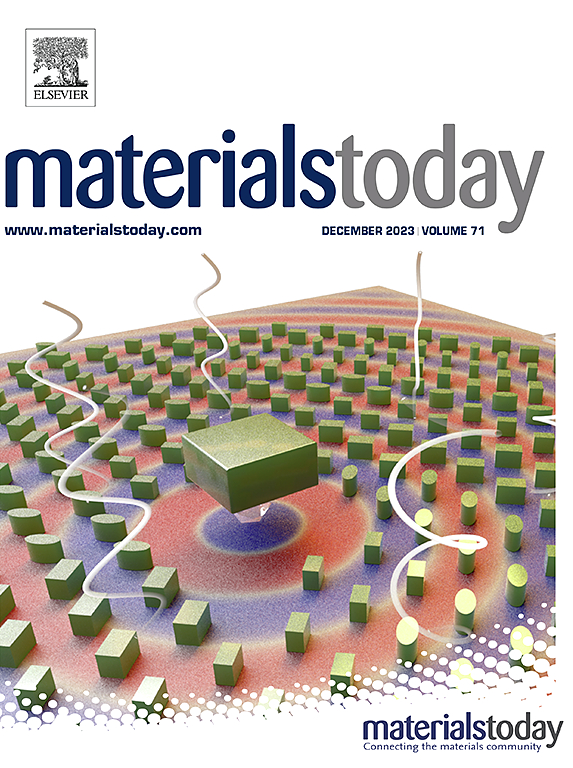Origin of enhanced performance when Mn-rich rocksalt cathodes transform to δ-DRX
IF 22
1区 材料科学
Q1 MATERIALS SCIENCE, MULTIDISCIPLINARY
引用次数: 0
Abstract
Most Mn-rich cathodes are known to undergo phase transformation into structures resembling spinel-like ordering upon electrochemical cycling. Recently, the irreversible transformation of Ti-containing Mn-rich disordered rock-salt cathodes into a phase — named — with nanoscale spinel-like domains has been shown to increase energy density, capacity retention, and rate capability. However, the nature of the boundaries between domains and their relationship with composition and electrochemistry are not well understood. In this work, we discuss how the transformation into the multi-domain structure results in eight variants of Spinel domains, which is crucial for explaining the nanoscale domain formation in the -phase. We study the energetics of crystallographically unique boundaries and the possibility of Li-percolation across them with a fine-tuned CHGNet machine learning interatomic potential. Energetics of vacancies reveal a strong affinity to segregate to the boundaries, thereby opening Li-pathways at the boundary to enhance long-range Li-percolation in the structure. Defect calculations of the relatively low-mobility Ti show how it can influence the extent of Spinel ordering, domain morphology and size significantly; leading to guidelines for engineering electrochemical performance through changes in composition.

富锰岩盐阴极向δ-DRX转变时性能增强的原因
已知大多数富锰阴极在电化学循环时经历相变成类似尖晶石有序的结构。最近,含钛富锰无序岩盐阴极不可逆转变为具有纳米级尖晶石结构域的δ -相已被证明可以提高能量密度、容量保留和速率能力。然而,畴间边界的性质及其与组成和电化学的关系尚不清楚。在这项工作中,我们讨论了向多畴结构的转变如何导致尖晶石畴的八个变体,这对于解释δ相中纳米级畴的形成至关重要。我们用微调的CHGNet机器学习原子间势研究了晶体学上独特边界的能量学和锂在它们之间渗透的可能性。16d空位的能量学显示出向边界分离的强烈亲和力,从而打开了边界上的锂离子通道,增强了锂离子在δ结构中的远程渗透。相对低迁移率Ti的缺陷计算表明,它对尖晶石有序程度、畴形态和尺寸有显著影响;通过改变组成为工程电化学性能提供指导。
本文章由计算机程序翻译,如有差异,请以英文原文为准。
求助全文
约1分钟内获得全文
求助全文
来源期刊

Materials Today
工程技术-材料科学:综合
CiteScore
36.30
自引率
1.20%
发文量
237
审稿时长
23 days
期刊介绍:
Materials Today is the leading journal in the Materials Today family, focusing on the latest and most impactful work in the materials science community. With a reputation for excellence in news and reviews, the journal has now expanded its coverage to include original research and aims to be at the forefront of the field.
We welcome comprehensive articles, short communications, and review articles from established leaders in the rapidly evolving fields of materials science and related disciplines. We strive to provide authors with rigorous peer review, fast publication, and maximum exposure for their work. While we only accept the most significant manuscripts, our speedy evaluation process ensures that there are no unnecessary publication delays.
 求助内容:
求助内容: 应助结果提醒方式:
应助结果提醒方式:


